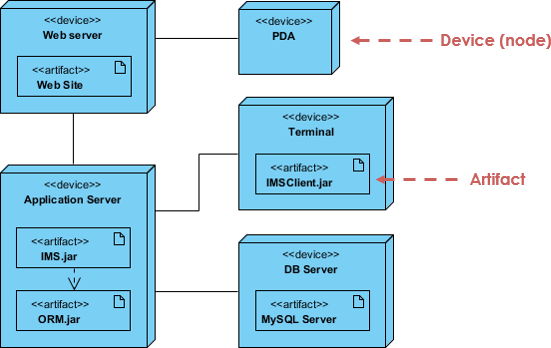Home » Uncategorized » Page 2
In today's competitive business landscape, understanding your customers is more critical than ever. The key to success lies in not just meeting their needs but exceeding their expectations. That's where Visual Paradigm comes in, empowering you to dive deep into the world of Customer Experience Design (CX) and revolutionize the way you do business. Why Customer Experience Design Matters Customer Experience Design is the art of crafting unforgettable journeys for your customers. It's about more than just providing a product or service; it's about creating a seamless and delightful experience that keeps your…
continue reading →
Introduction In an era marked by the digital revolution, libraries continue to play a pivotal role in disseminating knowledge and fostering a love for literature. To ensure the efficient functioning of these sanctuaries of learning, a well-structured Library Management System (LMS) is indispensable. In our case study, we embark on a journey to design a comprehensive LMS, taking it from conceptualization to implementation. Our goal is to demonstrate the step-by-step process of transforming a high-level concept into a finely tuned database system, ready to serve the needs of a bustling library. From Class…
continue reading →
Introduction State diagrams are powerful tools used in various fields to model and visualize the behavior of systems, processes, and entities. They are especially useful for understanding and designing complex systems, providing a clear visual representation of how different states and transitions between them affect the overall functionality. In this article, we will explore how to apply state diagrams effectively in different usage cases, from software development to business process management and beyond. Software Development State diagrams play a crucial role in software development, aiding in the design and implementation of complex software…
continue reading →
Introduction: Object diagrams are an essential part of the Unified Modeling Language (UML) used in software engineering and system design. They serve as a crucial bridge between the abstract concepts defined in class diagrams and the concrete instances of those classes during runtime. This case study explores the role of object diagrams in UML, their relationship with class diagrams, and when and how they are used in the software development process. Background: Before delving into the specifics of object diagrams, it's essential to understand their connection with class diagrams, which are more commonly…
continue reading →
Unified Modeling Language (UML) is a powerful tool used by software engineers and designers to visualize, document, and communicate the various aspects of a software system. UML offers a wide range of diagram types, each designed to represent specific aspects of a system's architecture and behavior. Among these, the Profile Diagram stands out as a specialized diagram that allows users to extend UML to meet their specific modeling needs. In this article, we will delve into the world of Profile Diagrams in UML, exploring their purpose, elements, and how they can enhance the…
continue reading →
Introduction Unified Modeling Language (UML) provides a powerful set of tools for modeling various aspects of a system or software application. However, deciding which UML diagram to use can be challenging, as different diagrams serve different purposes. In this guide, we will explore three key UML diagram types: State Diagrams, Sequence Diagrams, and Activity Diagrams. We will help you understand when and why to use each type, providing clarity on their specific use cases and advantages. State Diagrams focus on modeling the states and state transitions of an object or system. Sequence Diagrams…
continue reading →
Introduction Unified Modeling Language (UML) is a widely used visual modeling language in software engineering and business process management. It provides various diagrams to represent different aspects of a system or a process. Two commonly used UML diagrams for modeling processes are Activity Diagrams and Business Process Model and Notation (BPMN). While both serve the purpose of process modeling, they have distinct characteristics and use cases. This article aims to compare and contrast Activity Diagrams and BPMN in UML to help you choose the most suitable diagram for your modeling needs. Activity Diagrams…
continue reading →
Introduction In the dynamic world of software development, managing scope is a critical challenge. The concept of "Cloud, Kite, Sea, Fish, Clam" offers a unique lens through which we can understand and approach this challenge. This model, developed by Alistair Cockburn, provides a structured framework for breaking down and assessing the scope of software projects at various levels of granularity. In this article, we delve into how these scope levels affect the software development process, from project planning to resource allocation, communication, and beyond. Join us as we explore the profound impact of…
continue reading →
Component diagrams and deployment diagrams are two types of diagrams used in the Unified Modeling Language (UML) to model different aspects of a software system. They serve different purposes and focus on different aspects of system design and implementation. Component Diagram Purpose: Component diagrams are primarily used to represent the high-level structure of a software system in terms of its components and their relationships. They focus on the organization and modularization of the software system. Elements: Component diagrams include components, interfaces, connectors, and dependencies. Components: These represent the major building blocks or modules…
continue reading →
Unified Modeling Language (UML) is a powerful tool for visualizing, designing, and documenting software systems. When it comes to modeling complex systems like client/server architectures, UML offers various diagrams to represent different aspects of the system. In this article, we will focus on using UML packages and deployment diagrams to model a client/server system. Understanding Client/Server Systems Before we dive into the UML modeling aspect, let's briefly understand what a client/server system is. In a client/server architecture, a networked system is divided into two main components: Client: The client is a user interface…
continue reading →











